I took my ’76 Trans Am out yesterday; I needed a reboot – and it needed exercise. Drove the orange-painted, screaming chickened “gas guzzler” around for about an hour, taking my usual route out and back. Full tank when I left. When I got done, I refilled at my local Marathon. I used about 4 gallons to travel about 60 miles, so about 15 miles per gallon given the car’s 21 gallon fuel capacity.
The 2021 Hyundai Veloster N press car I’ve been driving around all week (reviewed here) averaged 24.3 MPG, according to its computer.
Forty-five years is a long time. But it’s not that much of a difference – particularly when one takes into account everything that has changed over the 45 years that separate a car like my old “gas guzzler” from a new car like the Veloster.
My Trans-Am’s V8 has twice as many cylinders as the Veloster’s four cylinder engine – and is nearly four times the displacement (7.5 liters vs. 2.0 liters).
The Trans-Am’s V8 has a big four barrel carburetor that literally drips fuel – on purpose – into the engine, uncontrolled by any computer.
The Veloster’s engine – like almost all new engines – is fed fuel with great precision under extremely high pressure by a computer that controls four injectors, each of them screwed directly into one of the engine’s four cylinders. The fuel doesn’t drip into a warren of runners in a manifold and get sucked into the cylinders – eventually and not all of it – by negative air pressure, as is the case within my Trans-Am’s engine.
The Veloster has a state-of-the-art dual clutch automated manual transmission with eight forward speeds, three of them being overdrive gears specifically there to improve fuel economy by reducing engine operating speed at highway speeds.
My Trans-Am has been upgraded with a four speed automatic transmission with one overdrive gear.
The old Pontiac weighs about 3,800 pounds – or nearly two tons – chiefly due to the fact that its V8 is made of heavy cast iron and sits on a bolted-in steel subframe very similar to what you’d find underneath a 4×4 pick-up truck.
None of the front suspension parts are made of aluminum.
There is a cast iron rear axle out back, perched on steel leaf springs, also like a 4×4 truck’s. The hood and all of the exterior body panels are made of heavy metal – literally. Taking off the hood requires at least two strong men – and a pair of stamped steel hinges with big coil springs to support it when installed.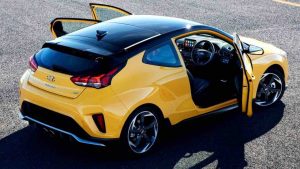
All four wheels are steel, too.
The Veloster – a much smaller car – weighs 2,987 pounds, almost 1,000 pounds less. As it should, given its engine is a fourth the physical size and made of aluminum; given it hasn’t got a rear axle at all (being front-wheel-drive) and given that many of its suspension components are also made of aluminum – as are all four of its ultra-lightweight wheels.
It does not have a bolted-on subframe. It has an integrated unibody specifically designed to eliminate the weight of the bolted-on subframe that used to be commonplace in cars (at least, American cars). Its hood is so thin and light a man – just one – could literally bend it with his bare hands. It is so light that all that’s needed to support its weight is a pencil-thin prop rod – as is commonplace in almost all new cars.
The point here is that in spite of all of these advantages – much lighter weight, much less engine and much more in the way of technology, including an engine management system that micromanages fuel/spark and every other parameter to maximize the MPGs – the 45-years-newer car only manages to deliver about 10 miles-per-gallon better than a literal antique car without any of those advantages.
It makes one wonder what a car such as the Trans-Am might be capable of if it had some of those advantages – and not even all the way. For example, a basic fuel injection system such as those that can be easily retrofitted to old cars like mine. Not direct injection like the Veloster’s – which is a hugely complex system that would require redesigning the old Pontiac’s engine in order to install it. Just a simple, bolt-on throttle body-type system.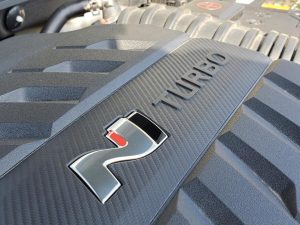
The MPG difference would likely decrease to about 8 miles-per-gallon and maybe even less.
Which makes one wonder why new cars like the Veloster use so much gas – relative to the gas used by old gas guzzlers like my Trans-Am.
The answer isn’t mysterious. It’s physics.
My Trans-Am’s engine makes horsepower the old-fashioned way, via displacement. Originally, it made just 200 horsepower. I made some upgrades – a performance camshaft being the major difference – that increased its output to around 275 and perhaps even 300 horsepower, which just happens to be about the same as the Veloster N’s 2.0 liter turbocharged engine makes.
In order for a small engine like the Veloster’s to make the power of a big engine, its effective displacement must be made comparable to that of a physically larger-displacement engine. My Trans-Am’s big-displacement V8 can draw in a lot of air – and there is a lot of room inside its coffee-can-sized cylinders. The Veloster’s little four is force-fed air, which is stuffed into its much smaller cylinders via the pressure of 20-something pounds of turbocharged boost.
This makes them bigger – or rather, it enables them to take in more air (and fuel).
No matter how you make your horsepower, in other words, it takes the same energy (fuel and air) to make it.
Hypothetically, the turbocharged little engine can deliver more than a 10 MPG difference vs. a much bigger engine like my Trans-Am’s engine, which is always a big-displacement engine.
My Trans-Am rarely gets more than 15 or so MPGs.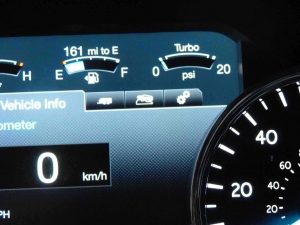
The Veloster can get as much as 33 or so MPGs on the highway – provided it’s not on boost. But that requires a light foot. As soon as you dial up the boost, down go the MPGs. Which means the mileage potential is more hypothetical than actual. The Trans-Am’s guzzling is more honest in this respect.
It is also more relaxed.
That big engine doesn’t have to work as hard to make horsepower and it is without question under a lot less pressure – literally. Its pistons, connecting rods, bearings and so on aren’t being stressed nearly as much – and not just because they aren’t under as much pressure. The smaller engine’s smaller parts have less material – including surface area – to absorb all of the stress imparted by all that boost.
My Trans-Am’s engine has had one rebuild in 45 years. How will these heavily turbocharged engines fare over the next 45 years?
One wonders whether any real gains have been made.
. . .
Got a question about cars, Libertarian politics – or anything else? Click on the “ask Eric” link and send ’em in!
If you like what you’ve found here please consider supporting EPautos.
We depend on you to keep the wheels turning!
Our donate button is here.
If you prefer not to use PayPal, our mailing address is:
EPautos
721 Hummingbird Lane SE
Copper Hill, VA 24079
PS: Get an EPautos magnet or sticker or coaster in return for a $20 or more one-time donation or a $10 or more monthly recurring donation. (Please be sure to tell us you want a magnet or sticker or coaster – and also, provide an address, so we know where to mail the thing!)
My eBook about car buying (new and used) is also available for your favorite price – free! Click here. If that fails, email me at [email protected] and I will send you a copy directly!


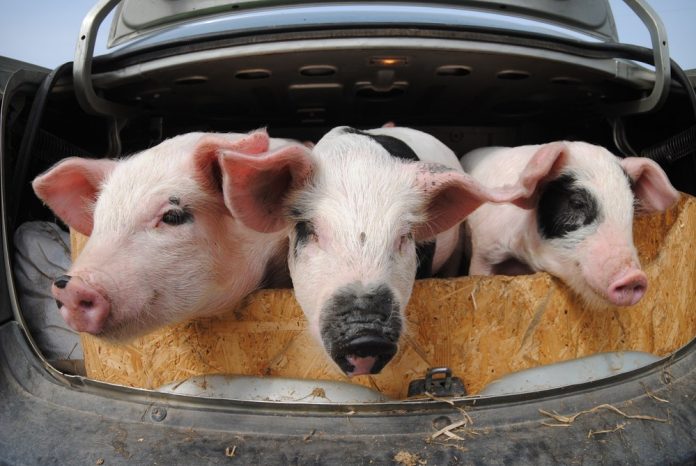

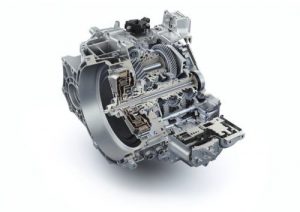









Around 2020, Ford was really proud of it’s new twin turbo 3.5 v6 pickup that got 21 mpg. I read in an old book on Dodge pickups that they put a 426 hemi in a 54 Dodge pickup and ran it 24 hours on a track, and averaged 22 mpg. 50 years and we lost 1 mile per gallon.
Hi me,
And the ’20 F-150 is “lighter” because it has an aluminum rather than steel body!
Here is the latest example of California over-regulation of cars.
https://www.caranddriver.com/news/a36731909/2022-porsche-911-gt3-california-ban-manual-transmission/
Ordered a 2022 911 GT3? You won’t be “allowed” to buy the manual version of it. It’s too LOUD…… Yes really! Why does this even need to be regulated?
But this is how they will get rid of cars altogether, death by a thousand cuts…….
California really sucks. How did the center of the car culture world turn into this nightmare?
These comments Eric give me a chuckle. In 73-75 I had an old rusted out Studebaker Commander with straight 6, 3 manual on the column speeds. Got 23-26 around the city but on the freeway got high 30s, best being 39 mpg on a 3 hour trip. Great for a college kid to drive. Went through a quart of oil a week so started getting used oil from the next door car mechanic’s station rather than buy new oil. After 2 years I scrapped the car and replaced it with a Rambler Classic 770.
Hi Eric,
I used to have a 1986 Iroc Camaro, black on black. I bought it with 6700 miles on it in 1996(ish). It had a 305 with throttle body injection. On the highway it got about 26 miles per gallon. Around town about 18.
https://classiccarsbay.com/media/main/vehicle_photos/49/f5/34/49f5343ed960ebec406d3d01f162fd9f.jpg
The cars I drive today are a 31 year old BMW 525i and 21 year old Mercedes E320. They both get a little better than 30 mpg on the highway. They’re both solid, reliable cars that are fun to drive.
If the point of these new ultra computerized, lightweight plastic cars with small engines is to increase fuel economy it seems to me they are failing miserably. I have an old w126 Mercedes with the 5 cylinder cast iron diesel that still pulls 30 on the highway. The car is not made of plastic but rather heavy duty German steel.
I recently finished fixing up an old first generation Honda Insight. I haven’t had it out to really get a feel for it’s real world miles per gallon, but I’ve heard they get almost 70mpg on the highway. It might be the best hybrid ever built.(?)
Seems to me the car companies know how to build them better, but they have no incentive to do so and are actually prohibited from doing so by all those bureaucratic mandates and such.
Bureaucrats are horrible for society and the world.
☮
Hi again…
Come to think of it, the 86 camaro had tuned port injection.
It was pretty nice and I never had a problem with it.
http://www.onallcylinders.com/wp-content/uploads/2015/03/515891-1000-0.jpg
☮
Indeed, Adam –
The problem isn’t engineering. It is politics. The gas mileage of most new cars is terrible in part because they are terribly heavy (the plastic exterior panels notwithstanding) and partly because their engines are being tuned for lowest “emissions,” which doesn’t necessarily correlate with highest mileage.
I’ve become convinced that the point is to make them so complex, expensive and disposable that most people either won’t want to buy one or can’t afford to buy one. The goal being to get most everyone out of a personally owned car. This is an agenda that’s been in play since the early ’70s and is just now coming to fruition.
Perhaps this is not the place for it, but I must say, Eric, that I wasn’t originally attracted to your page because of the cars.
Sure, I liked SOME cars, and I do have a love of, and fascination with, engineering of all kinds, but I was never really a “car guy”. I came here primarily for the refreshing political rants from the lively and audacious author.
But I think I might be becoming a “car guy”, after all. I think the love for these machines is somehow contagious, and when given the proper insight and word-smithing, perhaps anyone might begin to appreciate such things as the lowly carburetor or a heavy steel hood.
Of course, it appears to be nearly too late to become a “car guy”, even after more than a century of the car’s ubiquity, they appear to be being primed for termination, and if so, generations will lose something central to their lives and being. It is quite sad.
It’s never too late. Although I was a car fan for years I wasn’t a real “car guy” until I was 50 and went to the local community college to learn some real auto tech. Start your hobby now. Your only regret will be that you didn’t start sooner.
Thanks, Mark! These days, and those yet to come, it will be not just a hobby, but an act of rebellion, it appears. So be it.
So light weight rims, disc brakes, various weight savings parts, light weight battery, maybe lowering it.
All that and the gap narrows even more. This is why I hate govt, cant have nice things because a bunch of loser pencil pushers and ugly people who couldnt get laid without paying for it hate nice things and wanna make us all miserable.
If things are reciprical, how long until we get back into the 60s again with cars and trucks, assuming the patriots beat out the globalist scums?
Hi Zane,
I think we have to start over; there’s no fixing this. Maybe here – maybe on some other world (they are out there, tantalizingly close yet to far away). I understand how Julian the Apostate must have felt as he watched Rome descend into the mindlessness that would reign for the next 1,000 years.
Funny thing about Julian the Apostate, whose reign was quite brief (361 to 363), although he’d had quite the career as a “Caesar”, which was at the time a sort of “junior” emperor, ruling a fourth of the empire under the “tetrarchy” system that Diocletian had set up some eighty years prior (and which Constantine had effectively ignored during his twenty-five year reign, the men appointed to the other posts of his “4-some” were very much his puppets). He’d left Christianity not due to any doctrinal problems or simple disbelief, he was fed up with the bickering and infighting within the Church, and how, once the “Catholic” Church enjoyed sponsorship under the Emperor, it immediately persecuted both “pagans” (yeah, gotta stamp out those “People Against Goodness And Normalcy”, P-A-G-A-N, “Pagan”) and rival Christian sects like the Gnostics, Marcionites, Syriacs, and Arians, as well as the Jews. Julian felt that Christianity, being “Eastern” in origin, was destroying the social order of Roman society, and sought that Rome should be “Roman” again, hence why he embraced the Jovian pantheon of yore.
Unfortunately for the pantheon-worshipping Emperor, he was felled in battle against the Sassanids under questionable circumstances. Some believed he was, in effect, “fragged” by one of his own soldiers who was a Christian, others believed that disgruntled Christian officers in the Army let a party of “Saracens” (Arabic auxiliaries in Sassanid, or Persian service), one of whose lance found and stuck the hapless Emperor in the gut, piercing his large intestine and liver. Whether this attack was the result of court and/or military intrigue and/or betrayal, what made it an unlikely, hence questionable incident is that Julian, in an act of haste, didn’t put on his mail armor (yep, the Romans used mail armor at the time), going after the retreating Sassanids with but his sword and shield. Had he been wearing the mail, the wound likely would have superficial, if the spear’s tip had penetrated at all. In spite of his physician’s efforts to treat the wound, gangrene set in and the poor man died an excruciating death about three days later. As there was little love lost for their apostate Emperor, many thought it was the judgement of an angry God.
One thing about EP Autos, is that not only does the lead man write stirring prose about vehicles and a love for freedom, but the crowd which gathers here is composed of such scholars. Historians, engineers, scientists and general wise men can always be found here, festooning the atmosphere with their quips and insight.
I don’t believe any other site I’ve encountered features this concentration of wisdom.
+1, I concur. Agreed.
Dad made this exact mistake when he bought a turbo Subaru Baja. He figured it would make a handy runaround micro truck, and the turbo 4 and 5 speed would be pretty thrifty. He ended up being so disappointed he shuffled it off to me to replace the clutch and sell.
That thing was an absolute blast to drive- very quick through the gears, suspension so stiff you could jack up one wheel and lift two, absolutely comfortable at 90 on the interstate, but worthless as a micro truck and she never got better than about 17mpg, even when I drove it in my normal egg-under-the-throttle-gas-is-precious way.
Turbo/supercharging adds displacement. It takes the same energy to drive a given vehicle regardless of displacement.
Eric,
Do you feel like Burt Reynolds from Smokey and the Bandit, when driving around in the screaming orange chicken?
I can’t imagine you’d want to, but could your Trans Am be easily converted over to fuel injection to bump your MPG’s? If you did convert – you’d get less of that gas and oil smell, which alone should negate the thought to ever do so. With a cars like yours, Smiles per gallon trump Miles per gallon all day.
Lastly, if much of the over the top taxes on gas were dropped, than the issue of MPG’s from a consumer cost standpoint, not gov’t mandates, becomes a non issue. But hey, you already knew that.
Hi Tim,
I just feel good driving it around! My ’76 is the last TA to come with the original-style shaker scoop. It was changed to much lower-profile and not functional at all beginning in ’77 – the year TA Burt drove in the movie. Mine is big and protuberant and easily made functional – bless Pontiac- by merely removing three small rivets and taking out the block off plate. I installed a proper flapper door – like the ’70-’72s had – only better because mine opens and closes according to vacuum pressure (not a switch) and so – from the driver’s seat – the car seems to be breathing, like a living thing – which it almost is.
’76 is also the last year for the single – round – headlights, the Honeycomb wheels and (of course) the 455. Carousel Red is also a very unusual color – especially relative to the Bandit’s black and gold scheme, which adorned countless TAs made from ’77-81.
A last point of interest: The Bandit look predates Smokey & the Bandit. Pontiac put a show car so decked out back in ’74 and in ’76, a Limited Edition/50th Anniversary (of Pontiac) TA was finally offered for sale. I used to own one of these…. a four speed car, too. And ’76 was the very first year you could get T-Tops (with the 50th Anniversary car). These were made by Hurst and installed after the cars were made. Later TAs were available with factory Fisher tops, which are larger and don’t leak as badly!
I would never replace the Quadrajet with EFI! There is something priceless about that moan the secondaries make.. and the feeling of the choke snapping closed when you first start her up!
And that slurping sound through the secondaries when you punch it.
Sure, you have to go through the “cold start” ritual…slowly put the gas pedal to the floor, hold it for a second, then release, then push down against about a third of the way, then turn the key…and IF the engine’s in good shape and properly tuned, it shot fire right up before the starter has even spun the engine one complete rev! Let it rev to about two grand on the tach for about five seconds, then gently tap the gas pedal, and it’ll slow down to about 1,500 RPM for a few minutes, and will just PURRR…..
Somehow these little four-banger sewing machines, with their electronic controls, turbo boost, and mysterious plumbing, just aren’t quite the rush of a healthy, big-block V8 with a four-barrel on top.
Internal combustion and physics of vehicles has among the most studied technologies we have. It makes no sense why this Hyundai should get such terrible mileage when a 1995 Civic weighed about the same 3,000 lbs with a similar displacement engine could go mid 30s without doing anything special as a driver.
The two things that come to mind are that most Civics had a stick shift and were honestly small and simple (there’s no reason IMO to burden an economy car with power anything) and second the EFI tuning wasn’t so highly regulated by emission and “simulated” driving cycle testing.
The EPA requires manufacturers to follow arbitrary rules and we saw with the VW diesel fiasco that what the gubermint wants and what works in the real world do not match. Until you told the owner about VW “cheating” they loved the way their TDI drove and used fuel. Slap the “legal” tune on it and it lost MPG and became a dog. You know that’s true of every single engine out there, gas or diesel. There’s power left on the table to make Uncle happy. In a free world where the engineers at Hyundai could have done the most to actually dial it in the car would probably get 40 MPG and drive about the same (IOW it’ll never be a Trans Am but it’s not supposed to be).
I had a 1999 grand cherokee that got 28MPG if I did 53-55mph with a 4.0 SOHC straight six and auto trans
A 6.2 diesel (not really fair comparison) in a k5 blazer and 3 speed automatic can get 25mpg at 55mph, which is only 2mpg worse than the 1st gen tahoe hybrid
Dad’s 1976 Charger Daytona and grandad’s 1973 Coronet had the same 318 engine. The ’76 had a catalytic converter, the ’73 did not (and was probably set up to run higher compression on “regular” leaded fuel without knocking). Yes, the Coronet was a slightly smaller car but they both had AC and both weighed in about the same. The ’73 got about 18 MPG, the Charger gets about 10.
Simple reason: With the cats, the carb is set up to run richer. By doing so, along with reducing the compression ratio (I believe the ’73 was 8.5:1, the ’76 was 8.0:1) slightly, this reduced NOx. Without the cats, the exhaust would be quite “dirty” with HC. This is also what fairly much doomed the Wankel engines, and by extension, the AMC Pacer, which had been designed with using a GM-developed Wankel in mind, using the venerable inline six and later even the 304 V8 was an improvisation that made the Pacer a gas hog. They already ran somewhat “dirty” due to the need to run richer to compensate for the combustion chamber shape, especially as it MOVED with the rotor, this also produced more NOx, and this necessitated a larger, far more expensive cat to “eat” all that HC, and made for a quite THIRSTY engine given its power output.
It could also be that the ’76 Charger is simply not properly tuned, by then, Chrysler was not releasing a lot of info about tuning outside its dealer networks. Got even worse with the “Lean Burn”, which, WHEN it’s properly tuned, ran great…WHEN. Which wasn’t always.
It definitely wasn’t a good running vehicle. I remember it often stalling at the bottom of the hill just after the choke closed up after it got warm. But it had a short service life since in ’77 grandad died and grandma had to go to a home. We inherited their vehicles and the Charger went into storage, where it sits today.
Talk to me then, if you’re interested in selling it. I’m getting the ‘itch” for a B-body.
The vast majority of people can’t understand simple physics, it takes X amount of energy to move Y amount of weight around. An irrefutable fact of life on this planet. My 1991 Buick Riviera averages 25-27mpg even with my heavy foot, my 2002 Honda civic gets 42mpg with a light foot. Basically the same numbers the comparable new vehicles are capable of. 30 years of engineering has only further complicated things in an effort to attract interest, while not actually improving any aspect of the motor vehicle.
Eric, do you remember some years back, Jeremy Clarkson did a test on Top Gear where he put a Prius on the race track going flat out, and then dispatched an M3 to just basically keep up with it. After 10 or so laps – it turns out the M3 consumed less fuel than the Prius (to which Clarkson in his trademark stye concluded if you wanted to save the planet buy an M3 instead of a Prius). The reason was basically that the Prius was being pushed to the limit whereas the M3 was just cruising in its normal range. But it really hi lights how much the fuel consumption of these modern cars is dependent on how you drive them, which is seldom talked about. Having said that – your Trans Am is awesome, so whats fuel economy have to do with anything anyways !
That also plays to the Prius’s weakness. They really don’t do as well on the highway as they do on city streets. They typically get their best mileage in stop and go driving because they use the electric motor as a generator as part of their braking system and don’t have to run the engine much while stopped. Full speed on the highway for long distanced drops their fuel efficiency to it’s lowest, in conditions that a car like the M3 likely gets nearly it’s best fuel efficiency.
If nothing else, it makes no sense to lug around all that battery and motor weight if you’re cruising on the highway; as you pointed out, if there’s no braking and the ability to let the batteries and electric drive motor do the “start-stop” thing in city traffic, then there’s no advantage to the Prius whatsoever.
‘Drove the orange-painted, screaming chickened “gas guzzler” around for about an hour, taking my usual route out and back.’ — EP
The Barchetta pines to cruise Sunset Boulevard all the way to the beach. But there’s a crisis in Commiefornia … the La-La Land Times has the full dope:
SACRAMENTO — The California Legislature on Monday approved a $100 million plan to bolster California’s legal marijuana industry, which continues to struggle to compete with the large illicit pot market.
To transition from a temporary license to a permanent one requires a costly, complicated and time-consuming review of the negative environmental effects involved, and a plan for reducing those harms.
As a result, about 82% of the state’s cannabis licensees still held provisional licenses as of April, according to the governor’s office.
https://www.latimes.com/california/story/2021-06-14/california-struggling-marijuana-industry-cash-grants-budget
Only in La-La Land: first saddle a common weed that anybody can grow on their back porch with heavy retail taxes … then bury licensees in opaque, baffling paperwork … then subsidize them because they *gasp* aren’t competitive.
Anyone familiar with America’s Sovietized agriculture — its federal crop loans, price supports, and subsidies to fallow land — could have seen this coming from Day One.
This being the Left Coast, there’s even a set-aside for ‘cities offering equity funding to cannabis businesses owned by people of color.’
WHAT … don’t they know of all the entrepreneurs of color already diligently working the streets of Skid Row and Tenderloin, plying a cornucopia of tax-free narcotics?
It’s the guiding principle of statism, comrades: when at first you fail, raise taxes and fail again!
I’m sittin’ alone Saturday night, watching the Late Late Show
A bottle of wine, some cigarettes, I got no place to go
Well I seen your other man today, he was wearin’ my brand new shoes
And I’m down to seeds and stems again, too
— Commander Cody and His Lost Planet Airheads, Down To Seeds and Stems Again
Jim,
So they found a way to make it even worse than the “tax the hell out of it” scheme, huh?
You’re right, only in Commiefornia would growing more plants wreck the environment.
Those heavily turboed engines will end up in the trash. The remaining ones will command about 2k plus with over 150,000 on ebay with a 5 day warranty.
Sad part is that is still way better than their virtue signaling electric counterparts will do if they even hit 150,000 miles.